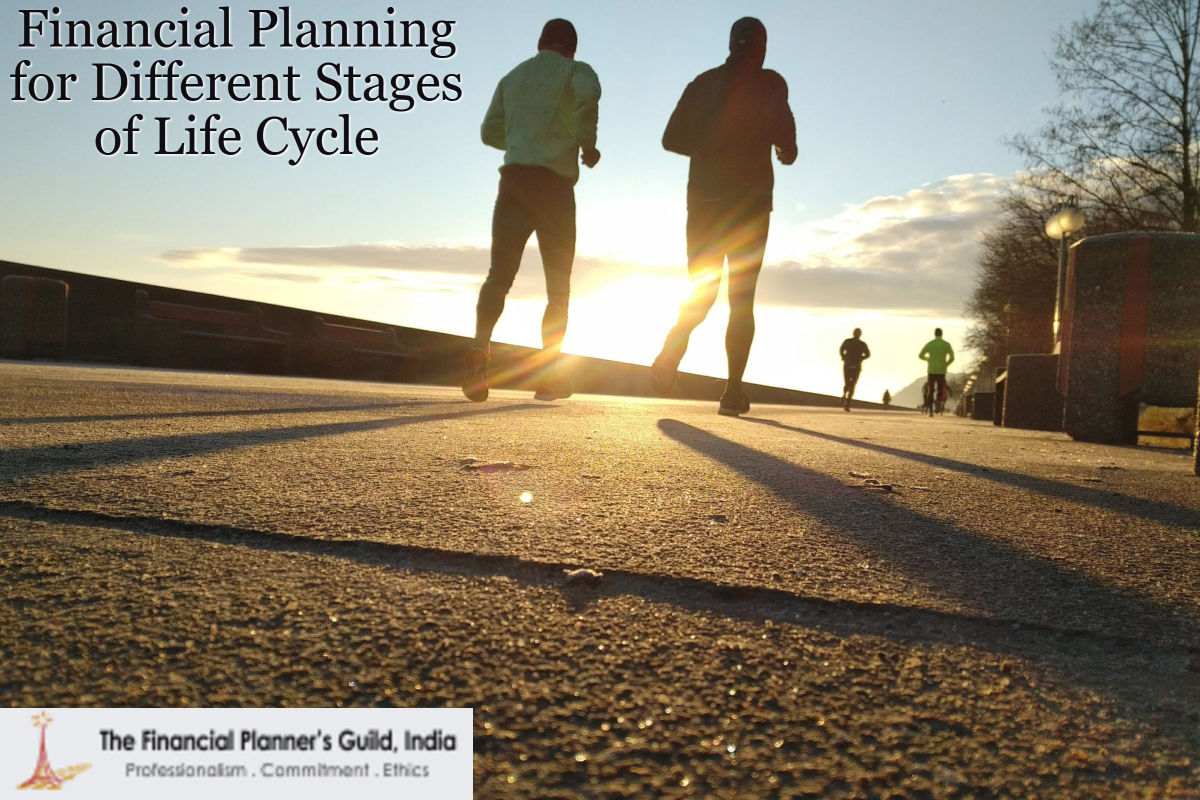
During our lifetime, we come across changes which affect our financial situation and needs. A rise in income level, spending patterns, concern for the family and retirement plans are some of the changes which impact our lifestyle. If not planned ahead, these can have ever lasting implications.
Although each person set specific financial goals throughout one’s lifecycle, the primary objective is always to plan ahead for each stage of life so that when changes do occur you are ready for it.
Financial Planning helps you in creating a well-managed and balanced financial strategy at initial stage of your life-cycle so that when you reach higher, you are able to ride the complexities of your life. For example your spending pattern developed initially will decide how you manage your expenses in future. Thus, If you create a realistic spending plan initially, you will spend and use credit wisely in future. This will help you in spending less than you earn, which will lead to more savings. So, when you are applying for a home loan, your eligibility will be more and your concern about a down payment will not be there.
While following a financial plan you need to ensure that the strategy you decide initially is followed. These are only basic strategies which if reviewed regularly and followed with a discipline, will help you in achieving those complex financial goals.

Stage 1 – Protection Phase (age 25-35)
This is the stage where you land a job and start developing your spending habits. This is also the stage where lots of people get into financial stress because of debt.
Primarily, this is the stage where you should be writing your financial plan. Avoiding Consumer and Credit Card Debts, Personal Loans should be the first objective. Start building that emergency fund which will help you during any unexpected happening like a job loss. As a thumb rule maintain 6 month expenses as this buffer.
Younger the age longer is the time period and higher is the accumulation. That’s power of compounding. Understand and allocate your savings for long term investments. This way your money will work for you. Start contributing in long term savings like PF and Superannuation.
Insure yourself through life and health Insurance. Younger the age, lesser the payment. Once married, your concern is your family. For an Indian family, dependent parents are also included. What if something happens and the income stops? Take a suitable income protection cover so that, after you, the family lifestyle does not suffer.
Stage 2 – Accumulation Phase (age 35-50)
This is the stage where your income has increased and so has the lifestyle. Along with it, responsibilities have also increased. You are more concerned about your family and children because you run debts in form of home loan and car loan. At this stage, you look at saving every extra rupee you earned for your children’s future.
Start repaying your debts with that extra rupee you earn. Investing every rupee saved by reducing your mortgage, will maximize your accumulation.
Increase your insurance cover if required. Take adequate health insurance to cover yourself and the family from that unexpected risk. Any unforeseen happenings can snatch-away the lifestyle your family has been accustomed to.
Contribute maximum to your Retirement Products such as PF and Superannuation.
You are at wealth building stage. Keep your investments in growth Assets which deliver maximum returns in long term. Revaluate your strategies, if required.
Stage 3 – Distribution Phase (Age 50-65)
This is the stage when your family is becoming independent. Your earnings are at peak and you are approaching retirement. You are preparing to distribute your wealth among your family.
Try to pay off all your debts prior to your retirement. You would not like to service any debt post retirement.
Check your asset allocation. Start the transition from high risk investments to low risk investments. Since post retirement you may not have a regular income, start evaluating your options.
Review your Long term investments which you started at initial stage. Your PF, Superannuation and other investments, especially drawn-up for retirement, should be ready to give you the benefits you have desired for. Remember, living longer is also a risk, if not planned well. Thus, it’s necessary that post retirement; you choose the options very wisely.
Although financial situation of every individual is different and hence the financial plan, the basic strategies remain the same. Regular Review, Proper Asset Allocation, Re-balancing when necessary and Changes in Financial Goals as per the Financial Situation are the base of your lifeboat. Missing any of these can create that gap which will inhibit any boat from reaching the destination.
FPG India ©2024. All Rights Reserved.
Designed & Developed by W3M Technoz
Comments are closed.